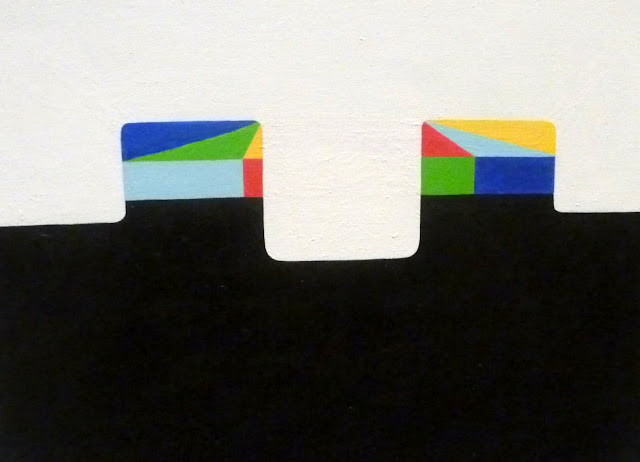Whitney Museum of American Art, 2012 Biennial.
Designed to give a provocative overview of what is happening in contemporary American art, the Biennial was a disappointment. It was very light weight, the kind of stuff you would find at an art fair or in most commercial galleries, in my view. Is this the best of contemporary American art, I kept asking myself. The only exception was Werner Herzog's Hearsay of the Soul which you can read about here. I was intrigued by Andrew Masullos' oil paintings and K8 Hardy's photographs and sculptures. There is furthermore, a post on the exhibits on the fifth floor which are part of their permanent collection which you can view here.
The Biennial was heavily weighted towards film and performance so that most of the exhibition wasn't on view at any given time. 'Our ideal viewer is going to come seven or eight times' claimed the organisers - given that the entry fee was $18 I wished them good luck.
The fourth floor was set aside for scheduled performances of one kind or another and we watched one group rehearsing but did not linger there long.
Dawn Kasper's studio was recreated on the third floor: books, clothes, musical instruments as well as the bed she was going to sleep in for the next three months cluttered the space.
Untitled (The Crown), 1949
There was a micro-exhibition of the paintings of someone called Forrest Bess who lived in total isolation, fishing by day and transcribing his dreams onto canvas by night.
Complete Freedom, 1970
Convinced of his inner femininity and obssessed with a desire for unity, Bess performed a series of surgical interventions on his genitals.
Untitled, 1949
'All symbolism in art', Bess wrote, 'points to this mutilation as being the basic step towards pseudo-hermaphrodite as the desired and intended state of man'. Bess placed his anatomical experiments on a par with his art.
Jutta Koether, The Seasons, 2011
Charles Demuth, Eight O'Clock, 1917
Andy Warhol, Untitled (Cyclist), 1976
Garry Winogrand, Beverley Hills, California, 1978 from the portfolio Women are Better than Men. Not only Have they Survived, They Do Prevail, 1978-80.
The exhibition room with Nicole Eisenman's paintings and works on paper
a closer look
A look at some individual pieces
Liz Deschenes, Untitled, 2011 (four silver-toned silver gelatin prints)
Andrew Masullo's small paintings
Masullo is known as a painter's painter partly because, despite their ostensible simplicity and modest scale, his works deftly resist being confined by content or artistic movement.
He works with unmixed oil paint in high-keyed colours on small canvases
his concerns are purely within the process of painting
Beginning with neither specific image or preconceived idea he allows each painting to reach its own conclusion through an often visible series of trial and error.
An interplay of form, colour and surface.
K8 Hardy
Drawing on the fashion tropes of advertising, combining some of its most recognisable modes (product close-ups, meticulous styling and staging, eye-catching colours) K8 Hardy's photographs and sculptures employ layering to confuse and undermine assumptions about race, gender and class
Rather than simply poking fun at fashion and its commercialisation K8 Hardy complicates our learned response to the conventions of advertising.
She obscures any glimpses of the model (typically the artist herself) while drawing attention instead to the messages projected by the model's physical features. In treating her body as an object Hardy upends a relatively recent yet deep history of women photographing themselves, itself a response to the millenia-old practice of male artists objectifying women as subjects of art.































Photos make exhibition look better than it really was.
ReplyDeleteSuch a disappointment!
Delete